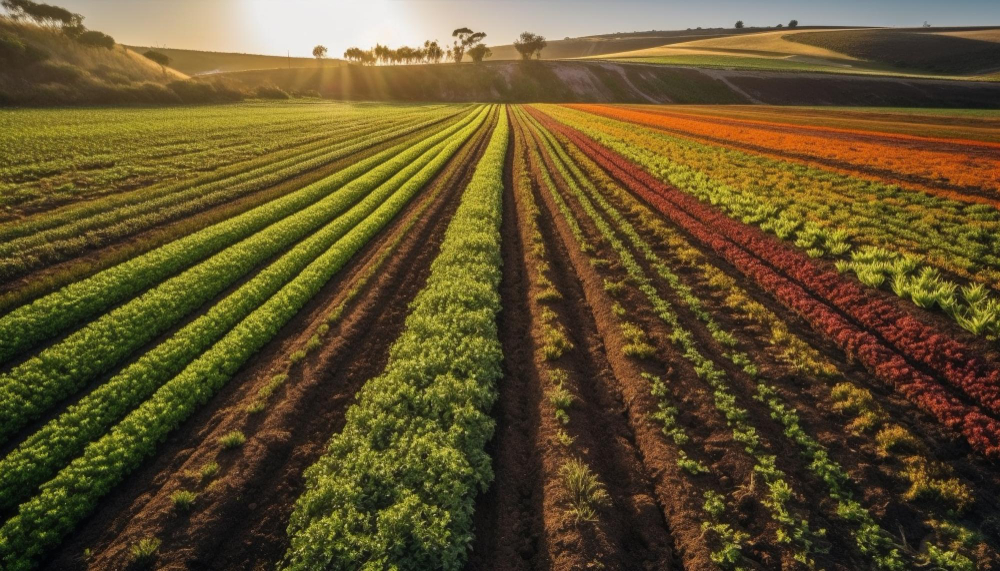Introduction:
Agroforestry is not just a farming technique; it is a legacy that can be passed down from generation to generation, leaving a lasting impact on the land and the livelihoods it sustains. In this article, we will explore how agroforestry practices create legacies that benefit current farmers and future generations, fostering a sustainable and resilient agricultural landscape.
Building Soil Health:
One of the foundational legacies of agroforestry is improved soil health. By integrating trees into farming systems, agroforestry practices enhance soil structure and fertility. Trees contribute organic matter to the soil through fallen leaves, twigs, and roots, enriching its nutrient content and improving water retention. This legacy of improved soil health ensures that future generations can continue cultivating productive and fertile land.
Carbon Sequestration and Climate Mitigation:
Agroforestry’s role in climate change mitigation creates a legacy of environmental stewardship. Trees capture and store carbon dioxide from the atmosphere, helping to reduce greenhouse gas emissions. The carbon sequestered in agroforestry systems remains stored in tree biomass and soil for decades. This legacy of carbon sequestration contributes to a more stable climate for future generations, addressing one of the most pressing global challenges.
Diverse Income Streams:
Agroforestry’s ability to diversify income streams provides a legacy of economic resilience. Farmers can reduce their vulnerability to market fluctuations and income shocks by cultivating a range of tree products alongside traditional crops. As these income sources mature, they become increasingly valuable, ensuring a stable financial foundation for future generations.
Soil Erosion Control:
Agroforestry’s role in preventing soil erosion creates a legacy of land conservation. The root systems of trees help stabilize soil, controlling erosion caused by wind and water. By preserving the topsoil, agroforestry practices ensure that the land remains productive for farming and sustains healthy ecosystems for generations.
Enhanced Biodiversity:
Agroforestry practices promote biodiversity, leaving a legacy of thriving ecosystems. The diverse array of tree species and crops within agroforestry systems creates habitats for beneficial insects, birds, and wildlife. This ecological diversity supports pollinators and natural pest control, improving overall agricultural productivity and ensuring the well-being of future generations.
Food Security:
The legacy of food security is a fundamental benefit of agroforestry. By providing a continuous source of nutrition through tree products, fruits, nuts, and traditional crops, agroforestry systems contribute to long-term food security. Future generations will inherit the resilience and reliability of these diverse food sources.
Cultural Preservation:
Many indigenous and traditional farming communities have practised agroforestry for generations, passing down knowledge and skills related to tree-crop interactions. Agroforestry practices often align with cultural practices and rituals, preserving the traditions and identities of these communities. This legacy of cultural preservation ensures that future generations will continue to benefit from the wisdom of their ancestors.
Community Bonds:
Agroforestry fosters strong community bonds, creating a legacy of cooperation and mutual support. The collaborative nature of agroforestry practices encourages knowledge sharing, resource pooling, and collective land management. These tight-knit communities are better equipped to address challenges and uncertainties, ensuring the well-being of future generations.
Investment in the Future:
Agroforestry is an investment in the future, providing a legacy of long-term sustainability. Farmers are sowing the seeds of a more resilient and prosperous agricultural landscape for their children and grandchildren by planting and managing trees. The benefits of agroforestry practices often become more apparent and valuable over time, reinforcing the legacy of sustainable land use.
Conclusion:
Agroforestry is not just about the present; it’s about the future. The practices and principles of agroforestry create legacies that extend beyond individual farmers and impact entire communities and ecosystems. The generational impact of agroforestry practices is profound, from improved soil health to carbon sequestration and economic resilience to cultural preservation.
As we face the challenges of a changing climate, growing population, and environmental degradation, agroforestry offers a path forward. By embracing agroforestry, farmers can leave sustainability, resilience, and abundance legacies for future generations. In doing so, they ensure that their land continues to thrive and provide for the well-being of their descendants, leaving a leafy legacy for generations to come.
